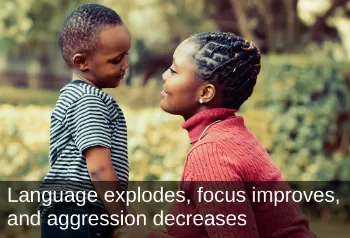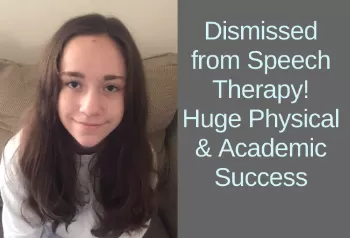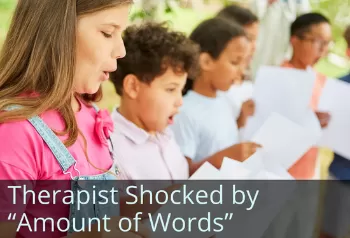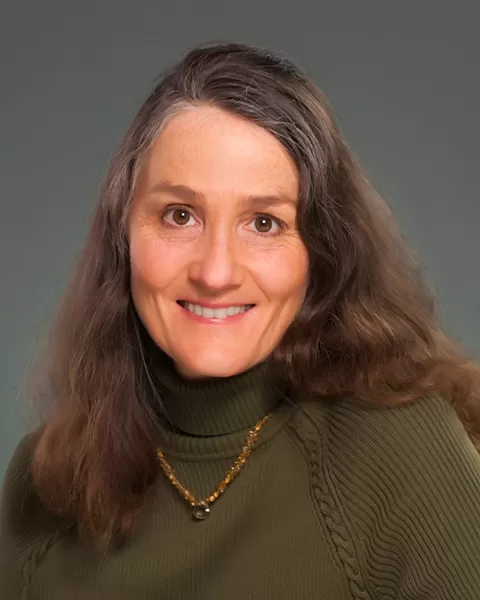Why SLPs Use Primitive Reflex Integration to Help Clients
 Greetings SLPs and Audiologists!
Greetings SLPs and Audiologists!
We know that speech begins as a set of sensory-motor skills. When children do not receive their full repertoire of innate neurodevelopmental movements in infancy, speech challenges often result. Find out why primitive reflex integration and rhythmic movements are so important for speech development. With the Brain and Sensory Foundations program, SLPs and AUDs get a training course in primitive reflex integration and rhythmic movements to build the foundation for speech development.
How is this working in real life? Hear from Carrie Eskenazi, an SLP who has embraced these powerful tools for her clients:
 Carrie Eskenazi, SLP
Carrie Eskenazi, SLP
"I have been a speech-language pathologist for over 20 years and about 5 years ago, I began to feel that there was a missing piece to my practice. I was supporting speech, language and social skills, but there was so much more that needed to be addressed in order for my students to move forward. I began studying primitive reflexes and neurodevelopment movements with Sonia Story in her Brain and Sensory Foundations I course in 2019. It was transformative for my own well-being and for my practice. I found that I was able to connect on a much deeper level with my students using heart connection and guided movements. I continued my studies with Sonia Story in Brain and Sensory Foundations II. I am now able to address many of my students’ challenges in a more holistic way using the techniques I learned in studying with Sonia Story. In the past 4 years, I have seen astounding changes in relatively short periods of time by implementing reflex integration and neurodevelopmental movements: children with little to no language, who now have conversations with me; children who could not sit still for more than 2 seconds, who now sit in groups with others and listen carefully; children with many phobias and fears, who now participate in their school day with joy."
Earn ASHA CEUs while gaining a new set of inspiring and effective tools!
"I feel my expectations were highly exceeded. I would recommend this to others." Marianna Bruneau, SLP
This 4-year-old boy had separation anxiety, behavioral issues, inability to focus, and speech challenges. See how innate rhythmic movements boosted his speech while transforming his other challenges.
After 9 years of speech therapy, this 12-year-old girl with ADHD and anxiety still struggled with receptive and expressive language. In just 5 months, her anxiety, ADHD symptoms, academic challenges, and speech issues were successfully transformed. Find out the tools her mother used to help this girl become a capable student who no longer needed speech therapy.
This 4-year-old boy was referred to OT by his SLP and parents for motor coordination and speech challenges. Find out how the Brain and Sensory Foundations tools helped him go from apraxia of speech and 2 years of unsuccessful potty training, to speaking in sentences and being fully potty trained.
See more case studies showing how neurodevelopmental movements can bring immense help for overcoming speech challenges, as well as selective mutism.
Sonia Story, M.S. has been teaching neurodevelopmental movements since 2006.
Sonia developed the Brain and Sensory Foundations program to provide comprehensive training in neurodevelopmental movements—combining innate rhythmic movements, play, primitive reflexes, and postural reflexes.
She earned a Bachelor's degree in biology/psychology and a Master’s degree in Movement Sciences. She is the author of The Importance of Reflex Integration and the Evidence eBook, giving the rationale and evidence basis for using neurodevelopmental movements for helping with challenges such as ADHD, Sensory Processing Disorders, anxiety, emotional dysregulation, visual skill deficits, poor social skills, gross and fine motor delays and other neurodevelopmental and behavioral disorders.
Her work is featured in numerous podcasts, summits, and conferences, and in the books Almost Autism: Recovering Children from Sensory Processing Disorder; Special Ed Mom Survival Guide; Family Health Revolution; and Same Journey, Different Paths—Stories of Auditory Processing Disorder.
Sonia’s mission is to help children and families experience the profound benefits of neurodevelopmental and integrative movements for more functional and fulfilling lives.






